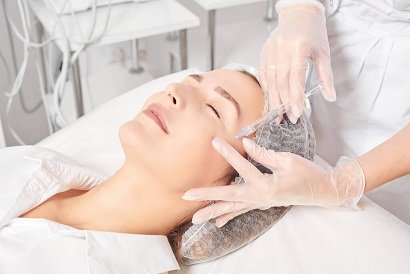
Anti-wrinkle injections primarily involve the use of botulinum toxin, a naturally occurring protein produced by the bacterium Clostridium botulinum. While the term “toxin” may sound alarming, its controlled and minimal use in cosmetic procedures has proven to be safe and effective. The toxin functions by blocking nerve signals in the muscles where it is injected, leading to temporary muscle paralysis. This, in turn, relaxes the overlying skin, diminishing the appearance of wrinkles and providing a more youthful complexion.
The Art of Precision
One of the key aspects of anti wrinkle injections is the precision with which they are administered. Skilled practitioners carefully target specific muscles responsible for the formation of wrinkles, ensuring a natural and subtle outcome. The art lies in achieving a delicate balance – reducing wrinkles without compromising the expressiveness and dynamism of the face. This precision has contributed significantly to the widespread acceptance of anti-wrinkle injections among those seeking non-invasive cosmetic enhancements.
Temporary Beauty: The Duration of Results
While anti-wrinkle injections offer a relatively quick and minimally invasive solution to combat aging signs, their effects are not permanent. The results typically last for three to six months, after which the treatment needs to be repeated to maintain the desired appearance. This temporary nature of the procedure appeals to individuals hesitant about committing to irreversible changes, providing flexibility and control over their aesthetic journey.
Beyond Vanity: Therapeutic Applications
Beyond their cosmetic applications, anti-wrinkle injections have found therapeutic uses in various medical conditions. Conditions such as chronic migraines, muscle spasms, and excessive sweating have shown positive responses to botulinum toxin treatments. This dual functionality showcases the versatility and potential health benefits of a procedure primarily known for its cosmetic enhancements.
Controversies Surrounding Anti-Wrinkle Injections
Despite their popularity, anti-wrinkle injections are not without controversy. Some critics argue that the pressure to conform to societal beauty standards fuels the demand for these procedures, fostering an unrealistic and potentially harmful perception of aging. Concerns also arise regarding the safety of the toxins used, although when administered by licensed professionals, adverse effects are rare.
Ethical Considerations in the Pursuit of Youth
The quest for everlasting youth raises ethical considerations that extend beyond the realm of medicine. As society grapples with the implications of widespread cosmetic procedures, it prompts reflection on the value placed on physical appearance and the potential consequences of an ageless aesthetic ideal. Balancing the desire for self-improvement with the acceptance of natural aging becomes a delicate societal conversation.
Conclusion: Navigating the Fountain of Youth
Anti-wrinkle injections have undeniably carved a niche in the realm of cosmetic procedures, offering a non-permanent solution to the inevitable march of time. The science behind these injections, coupled with the artistry in their application, presents a compelling case for those seeking to defy the visible signs of aging. However, as with any cosmetic intervention, a nuanced approach, thoughtful consideration, and open dialogue about societal expectations are crucial to navigating the complex landscape of the fountain of youth. In the end, the quest for beauty must be tempered with an appreciation for the wisdom and grace that comes with the passage of time.





